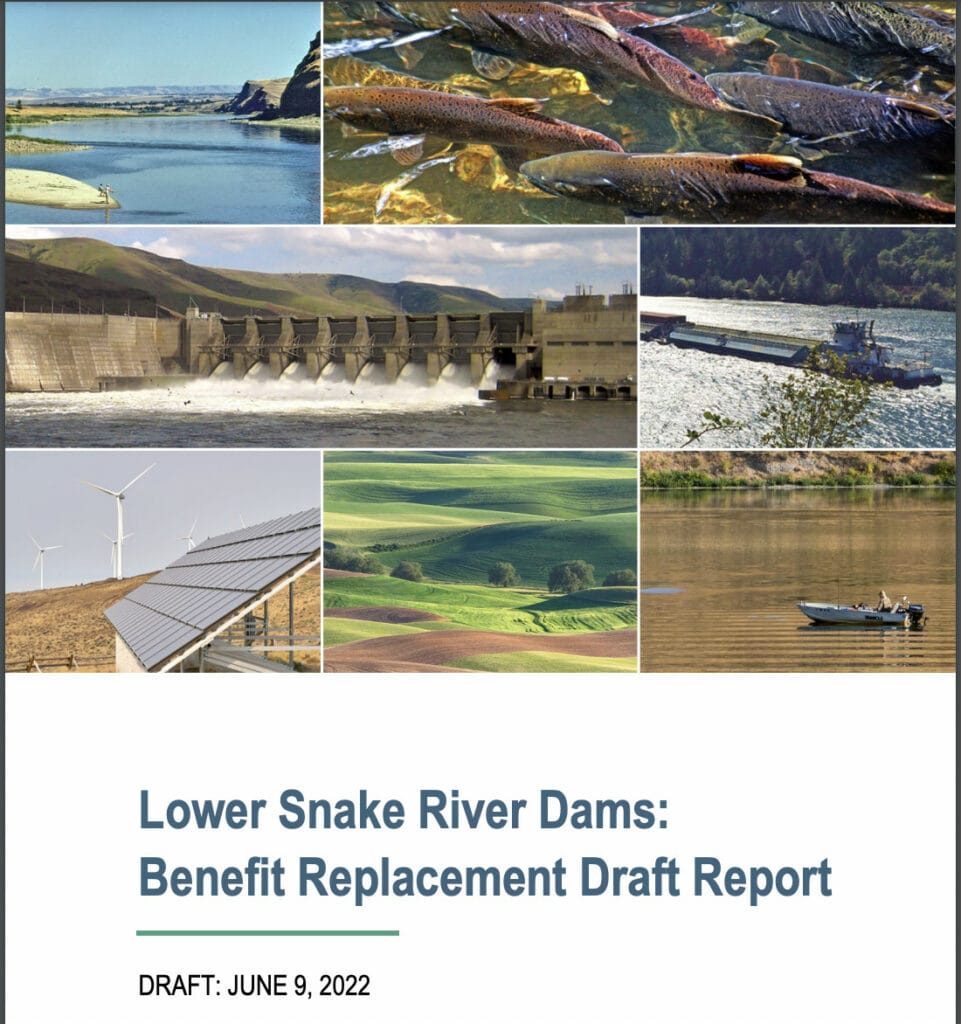COMMENT NOW: Lower Snake River Dams draft report
July 11 deadline to comment on draft report
On June 9, consultants working for Senator Murray and Governor Inslee released the “Lower Snake River Dams: Replacement Benefits Draft Report”. The report analyzes “whether there are reasonable means for replacing the services and benefits provided by the lower Snake River Dams (LSRD) sufficient to support dam breaching as part of a comprehensive salmon recovery strategy for the Snake River and the Pacific Northwest.” The report is organized by sections, with the seventh section focusing on energy replacement.
The draft report represents the most comprehensive analysis of whether to breach the lower Snake River dams and replace their services. Public comment is open until July 11, and a decision by Senator Murray and Governor Inslee on what they plan to recommend for moving forward is expected later this summer. This may be the most significant progress in the decades-long campaign to save Columbia and Snake River basin salmon.
Online comments can be submitted by clicking the button below or emailed comments can be sent to info@lsrdoptions.org with the subject line: “Draft LSRD Benefit Replacement Report.”
We highly encourage you to read Section 7 “Energy Replacement” of the draft report yourself and craft your own comments. However, we recognize that every organization may not have the bandwidth to analyze the 22-page section. Download a pdf of our key takeaways or see below — you are welcome to use our takeaways to craft your own comments.
1. We can do this! There is sufficient energy system information to make a decision to retire the LSRD. The LSRD energy services can be replaced with an affordable, diverse portfolio of clean energy resources that can address the seasonal limitations of the LSRD and improve value for the Northwest power system.
2. The draft report fails to provide a 50-year cost and risk comparison between keeping the LSRD and replacing them with a clean energy portfolio. Without this information, decision-makers and the public are left with an incomplete picture of clean energy net benefits. We know that the benefits of breaching the dams substantially exceed the benefits of keeping them.
3. The draft report states that continued advancement of battery technology is needed to address future dispatchable energy needs. The final report should be clear that while it may be true that future technology development will make replacing the services of the LSRD even easier and cheaper, current battery technology, paired with a portfolio of clean replacement resources and effectively deployed, can replace and improve upon the energy services of the LSRD.
If you have any questions or would like support, please email chris@nwenergy.org


